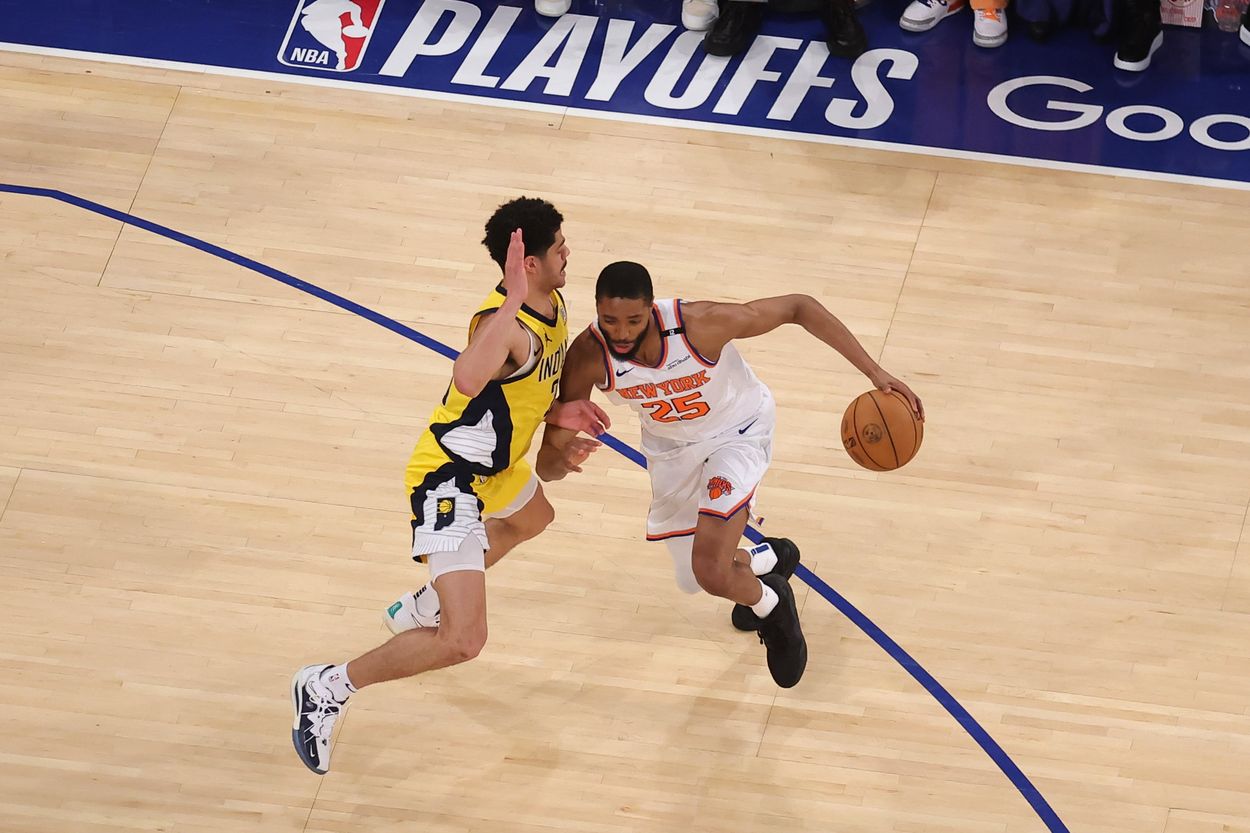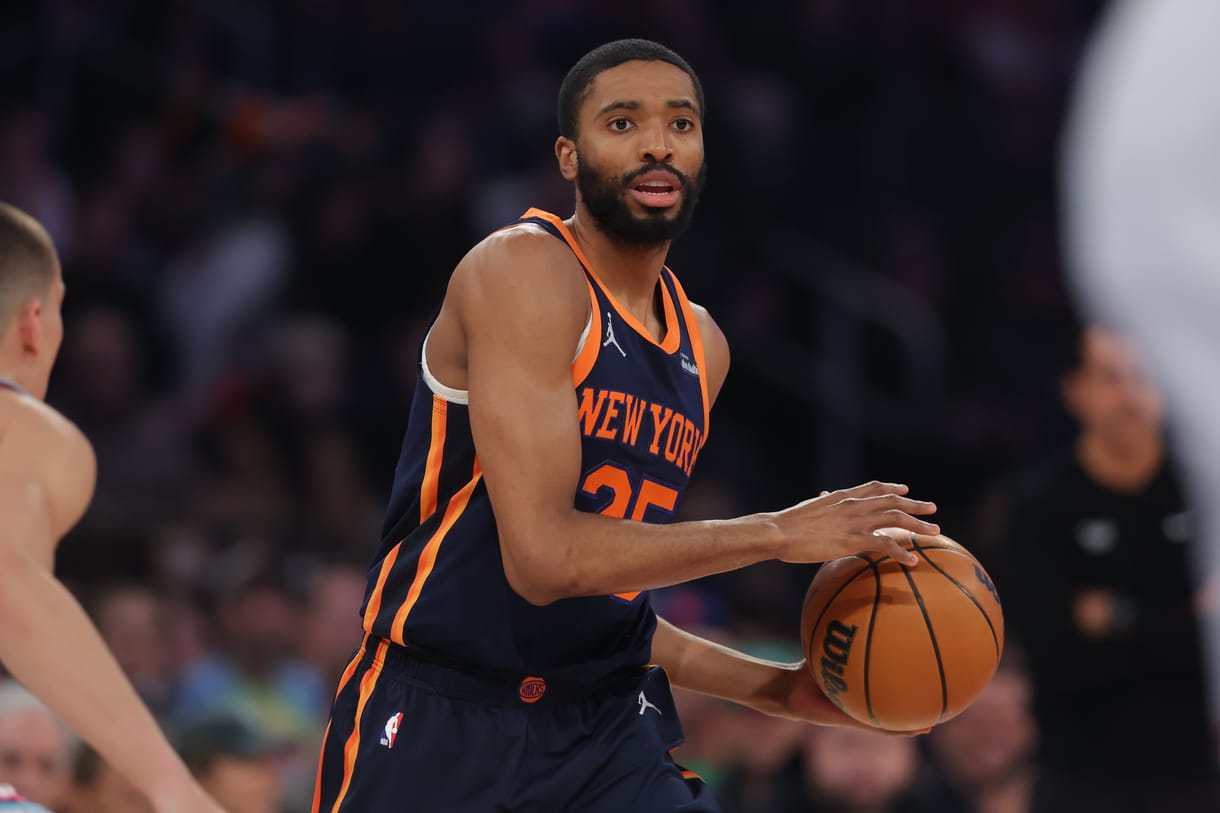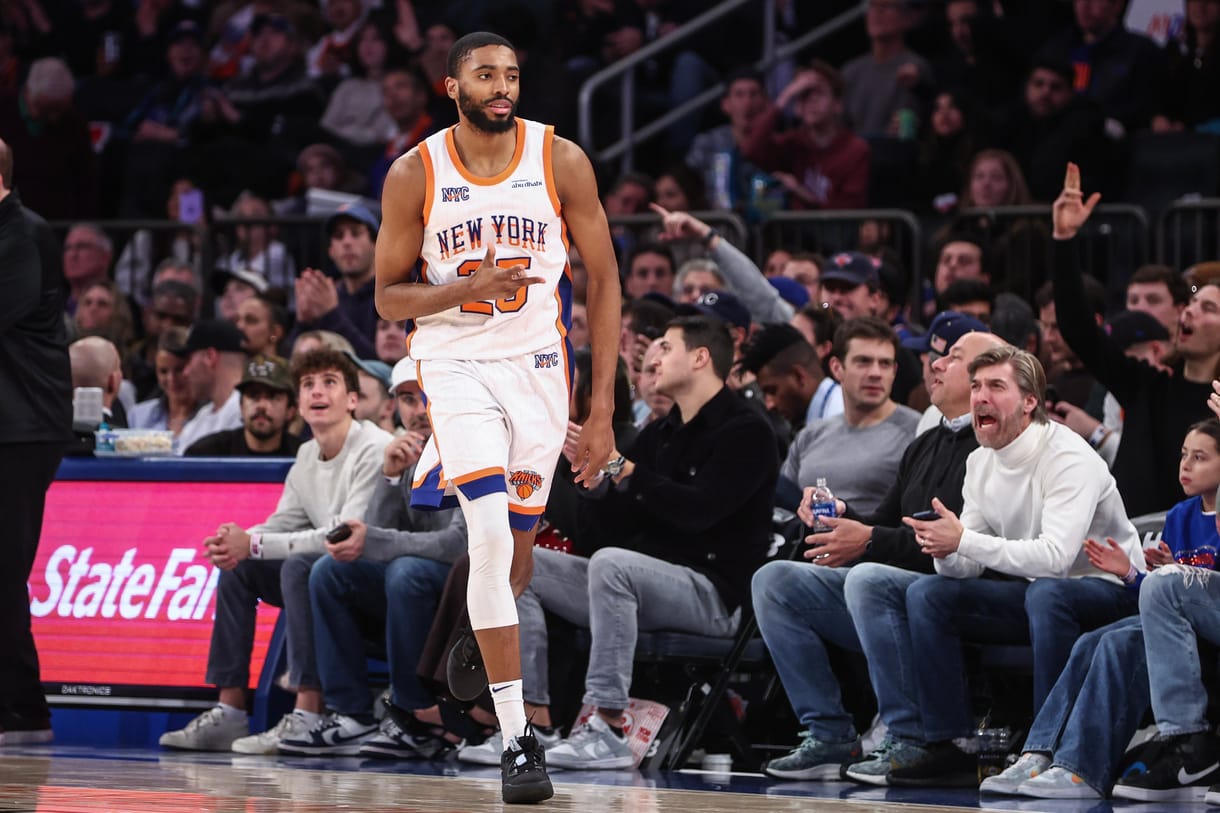
It didn’t take long for Mikal Bridges to showcase the effort and health that the New York Knicks dream of in a player. Since joining New York, the 6-foot-6 swingman has become a vital piece of the team’s identity — a player whose reliability and work ethic perfectly match the city’s energy.
This offseason, the Knicks rewarded that consistency with a four-year, $150 million extension that includes a $6 million trade kicker. But if his early impact under new head coach Mike Brown is any indication, Bridges isn’t going anywhere soon.

The definition of reliability
Bridges’ durability borders on the absurd. He has played at least 82 games in four straight seasons, something almost unheard of in today’s NBA. He doesn’t miss time, doesn’t take nights off, and rarely looks gassed even in the fourth quarter.
Last season, he averaged 17.6 points, 3.7 assists, and 3.2 rebounds while shooting 50 percent from the field and 35.4 percent from three. His shooting dipped slightly from deep, but his overall efficiency held strong, finishing with a .570 effective field goal rate.
That kind of production from a player who never leaves the floor is invaluable, and Brown seems intent on getting even more out of him.
Mike Brown’s vision fits Bridges perfectly
Under Tom Thibodeau, the Knicks relied heavily on isolation play and half-court sets. That approach slowed the pace and limited transition opportunities, which happened to be Bridges’ greatest strength. Brown’s system flips that completely, focusing on tempo, spacing, and off-ball movement — all areas where Bridges thrives.
“He could be if not the best runner in the NBA at least top three,” Brown said. “Not just full court run but half court cut. And a high-level shooter. Defensively one of the best chasers I’ve been around. Even if cracked on pick and roll, his will to pursue is extremely impactful.”
That praise isn’t just coach-speak. Brown’s offense is tailor-made for Bridges, whose combination of endurance and speed allows him to create easy looks both in transition and as a cutter. On a team with multiple shot creators like Jalen Brunson and Karl-Anthony Towns, Bridges’ movement without the ball becomes a constant weapon.
The value of controlled chaos
Bridges brings a brand of chaos that the Knicks have been missing — not the reckless kind, but the kind that keeps defenders off balance. His ability to sprint the floor, then immediately shift into a half-court cutting role, forces defenses to react rather than dictate.
He doesn’t need the ball in his hands to impact the game. He slips into open space, hits the corner three, and constantly pressures defenders to stay locked in. It’s like trying to guard a moving target that never tires.
That energy is contagious. The Knicks’ offense already looks more fluid with him involved, and his presence gives Brown the freedom to experiment with smaller, faster lineups that weren’t feasible under Thibodeau.

A player built for New York
In a city that demands effort and toughness above all else, Bridges fits the mold perfectly. He’s not flashy or loud, but he’s relentless — the kind of player who earns respect every night simply by showing up and doing the work.
His $150 million contract might look steep on paper, but for a player who defends, runs, and plays 82 games a year, it could end up being one of the league’s better value deals.
Bridges might not be the Knicks’ biggest star, but he’s quickly becoming their heartbeat. And under Mike Brown’s system, he finally looks like he’s playing the kind of basketball that suits him best — fast, efficient, and full of purpose.
